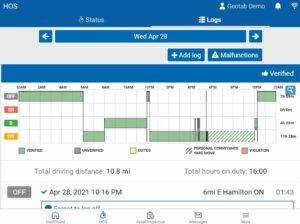Ever found yourself in a situation where an emergency order is in place, and you’re not sure how it affects your Hours of Service (HOS) and Electronic Logging Devices (ELD)? You’re not alone. Let’s break it down, so you’re not caught off guard.
The Basics of Emergency Orders
First things first, Hours of Service During Emergency Orders are typically issued by federal or state agencies to address urgent situations like natural disasters or pandemics. These orders often provide temporary relief from certain regulations, including HOS rules. But don’t get too excited; there are some caveats.

Key Points to Remember
- Temporary Relief: Emergency orders usually offer a temporary suspension of HOS rules.
- Specific Circumstances: The relief is often for specific types of loads or routes.
- Limited Time: The order will have an expiration date. Keep an eye on it!
Hours of Service During Emergency Orders
What does the FMCSA have to say about Emergency Declarations.
ELD and Personal Conveyance:
A Quick Bonus Tip
Here’s a golden nugget for you ELD users.
If you’re operating under an emergency order, you can switch your ELD to “Personal Conveyance.”
This way, your logs won’t keep ticking as “On Duty Driving,” saving you from from an ugly log showing violations showing when you are actually compliant.
Sweet deal, right?
The 10-Hour Break Rule
Let’s look at Hours of Service During Emergency Orders when everything is done. You might think that the emergency order gives you a free pass on the 10-hour break rule. Nope, think again! Once you’re done with the emergency load and the order is lifted, you’re back to square one. That means you’ll need to take the required 10-hour break before hitting the road again.
What Happens If You Don't?
- Violations: You could face penalties, tickets, and be put out of services.
- Safety Risks: You’re putting yourself and others at risk.
Don't Drive Fatigued, Ever!
Last but not least, let’s talk fatigue. Even if you’re operating under an emergency order, you’re always required to ensure you’re not driving fatigued. If a DOT officer stops you and you’re showing signs of fatigue, they can put you out of service, emergency provision or not.
| Situation | Action |
|---|---|
| Operating under Emergency Order | Follow the order’s specific guidelines |
| ELD in use | Switch to Personal Conveyance |
| Required 10-hour break | Mandatory after emergency load |
| Signs of Fatigue | Risk of being put out of service |
Conclusion
Emergency orders can be a lifeline in critical situations, but they come with their own set of rules and responsibilities.
With the increase in DOT off-site audits, don’t get cocky when it comes to your CSA scores.
Always stay updated, take your breaks seriously, and never compromise on safety. Because at the end of the day, a safe trucker is a successful trucker.
Stay safe and keep on trucking!



Responses